Conflict Zones
Chinese soldiers in Ukraine: Is Beijing sending troops to back Russia? | Russia-Ukraine war News

Ukrainian President Volodymyr Zelenskyy said on Tuesday that his military had captured two Chinese men fighting with the Russian army.
Zelenskyy said that this was a clear sign that Russian President Vladimir Putin intended to continue the Ukraine war, potentially threatening the ongoing peace negotiations brokered by US President Donald Trump.
Ukrainian officials also said that the capture of Chinese soldiers – the first such instance in more than three years of the war – raised questions about Beijing’s commitment to peace. China has long insisted that it is a neutral party in the war and has pushed for a ceasefire, even as its relations with Russia have strengthened throughout the war.
Beijing has also, so far, avoided sending weapons and other military equipment for Russia to use in the war, while playing a key role in propping up the Russian economy, battered by unprecedented waves of Western sanctions.
So does the capture of Chinese soldiers in Ukraine, if confirmed, suggest that Beijing is now changing its policy and getting more directly involved in the war, including with manpower support for Russia?
What happened?
Zelenskyy posted on X, saying two Chinese citizens were captured by the Ukrainian military in Ukraine’s Donetsk region. Russia occupied parts of Donetsk alongside other Ukrainian provinces in 2022. Zelenskyy wrote that the army found identification documents, bank cards and “personal data” in the possession of the captured Chinese citizens.
“We have information suggesting that there are many more Chinese citizens in the occupier’s units than just these two,” Zelenskyy wrote. He added that Kyiv is continuing investigations into the matter and has contacted Beijing for a response. The captured men are currently in the custody of the Security Service of Ukraine, according to Zelenskyy.
“Russia’s involvement of China, along with other countries, whether directly or indirectly, in this war in Europe is a clear signal that Putin intends to do anything but end the war,” Zelenskyy wrote, adding, “This definitely requires a response. A response from the United States, Europe, and all those around the world who want peace.”
Ukrainian Minister of Foreign Affairs Andrii Sybiha said this casts a shadow of doubt on China’s formal position advocating for peace. “Chinese citizens fighting as part of Russia’s invasion army in Ukraine puts into question China’s declared stance for peace and undermines Beijing’s credibility as a responsible permanent member of the UN Security Council,” Sybiha wrote in an X post on Tuesday.
Our military has captured two Chinese citizens who were fighting as part of the Russian army. This happened on Ukrainian territory—in the Donetsk region. Identification documents, bank cards, and personal data were found in their possession.
We have information suggesting that… pic.twitter.com/ekBr6hCkQL
— Volodymyr Zelenskyy / Володимир Зеленський (@ZelenskyyUa) April 8, 2025
How has China responded?
China has denied Zelenskyy’s claims that several Chinese nationals are fighting in the war.
“Such claims have no basis. In fact, China’s position on Ukraine is very clear,” Chinese Foreign Ministry spokesperson Lin Jian told reporters in Beijing on Wednesday.
“Ukrainian side needs to view correctly China’s efforts and constructive role for the political settlement of the crisis.”
Are there past reports of Chinese soldiers fighting in Ukraine?
Yes, news outlets and social media posts have previously said that Chinese mercenaries are fighting in Ukraine.
French news outlet Le Monde reported on April 6 that it identified social media accounts of 40 Chinese people who claim to have signed up with Russian forces. The outlet interviewed a 37-year-old Chinese man who joined the war as a foreign mercenary in July 2023 and has since moved back to China.
In October 2024, there were reports on social media that Ukrainian forces had killed two Chinese mercenaries in Russia, the US-based Newsweek magazine reported. However, this was not backed by evidence and could not be independently verified by Newsweek.
Is China sending its soldiers to fight for Russia?
No, even if Zelenskyy is right and Chinese nationals are fighting in Ukraine on Russia’s behalf, that does not imply that Beijing has sent them there.
Mercenaries from multiple countries have arrived in Russia as tourists and joined the army in fighting against Ukraine. Several foreign mercenaries have also fought on Ukraine’s side against Russia in the war. And many foreign nationals have claimed over the past three years that they were duped into joining the Russian or Ukrainian militaries after being promised other jobs – a lucrative pay packet an incentive.
What other foreign fighters are involved in the Russia-Ukraine war?
In 2022, Putin supported a plan to allow foreign fighters to join Russia in the war. Many South Asian men, predominantly from Nepal, India and Sri Lanka, joined as mercenaries seeking economic opportunities.
While a Nepali Ministry of Foreign Affairs official estimated that about 200 Nepali men were fighting in Russia by the end of 2023, many estimate that there might be thousands of Nepalis on the battlefield.
In February, the Indian Ministry of External Affairs said that 127 Indian nationals were serving in the Russian armed forces. It is unclear how many among these Indian nationals are still fighting in Russia. According to the ministry last month, 16 Indian nationals who were serving in the Russian army have gone missing and the Indian government is in contact with the Russian government to find them.
South Korea, the US and Ukraine have also alleged that North Korean troops are fighting alongside Russian soldiers in Kursk amid strengthening military cooperation between Moscow and Pyongyang. Russia has not explicitly confirmed this. “But there is a difference: the North Koreans were fighting on the Kursk front against us,” Zelenskyy said on Tuesday during a combined briefing with Belgian Prime Minister Bart De Wever. “The Chinese are fighting on the territory of Ukraine,” said Zelenskyy.
Meanwhile, Colombia-based City Paper Bogota reported in November 2024 that more than 300 Colombian mercenaries fighting on Ukraine’s side had been killed during the war. Some Sri Lankans and Indians have also fought on Ukraine’s side.
Western nationals have also joined the war, fighting on the Ukrainian side. Many of these volunteer soldiers are US nationals. It is unknown how many US nationals are currently fighting in Ukraine. A CNN investigation published in January revealed that 20 Americans are missing in action in Ukraine, and casualties are spiking.
What is China’s stance on the Ukraine war?
China officially claims a neutral stance on the war. Beijing says it does not provide Russia or Ukraine with lethal assistance, unlike Western countries which have armed Kyiv with cutting-edge weapons.
“China welcomes all efforts aimed at promoting peace talks and supports the establishment of a balanced, effective, and sustainable European security framework to ultimately achieve lasting peace and stability in Europe,” Chinese Foreign Minister Wang Yi said in February.
However, China is a close political and economic ally of Russia and has continued to purchase discounted Russian oil, which has helped fund Moscow amid economic sanctions from the West.
Western companies withdrew business from Russia following Moscow’s full-scale invasion of Kyiv in February 2022. However, Chinese companies, including tech giants Alibaba and DiDi, continued business in Russia without scaling back. Chinese exports to Russia grew to fill the vacuum left behind by Western companies. In October 2024, Chinese exports to Russia grew by 12.7 percent compared with the previous year, Chinese customs data showed.
China has also backed Russia in United Nations resolutions on the war. In February, China abstained from voting on a UN General Assembly (UNGA) resolution which called for “advancing a comprehensive, just and lasting peace in Ukraine”. In February 2023, China abstained from voting on a UNGA resolution calling on Moscow to withdraw its troops from Ukraine. In April 2022, China voted against a UNGA resolution suspending Russia from the UN Human Rights Council.
What is the latest on Russia-Ukraine peace talks?
Since February, teams from Russia and Ukraine have separately met with representatives from the US for peace talks in Saudi Arabia. On March 25, the US and Russia announced a Black Sea deal where Russia agreed to halt the use of force and stop the military use of commercial vessels in the Black Sea. Ukraine agreed to these terms. All sides also agreed to a 30-day ceasefire on attacks on Russian and Ukrainian energy infrastructure.
However, Russia and Ukraine have since traded blame for violating the agreed terms so far. Putin also has not agreed to a 30-day complete ceasefire jointly greenlit by Washington and Kyiv.
On April 6, Zelenskyy posted on X, saying: “Today’s Russian attack included missiles launched from the waters of the Black Sea … A ceasefire at sea is not just about free navigation and the export of food products — it is, above all, about overall security and bringing peace closer.”
Conflict Zones
Haiti in ‘free fall’ as violence escalates, rights group warns | Armed Groups News
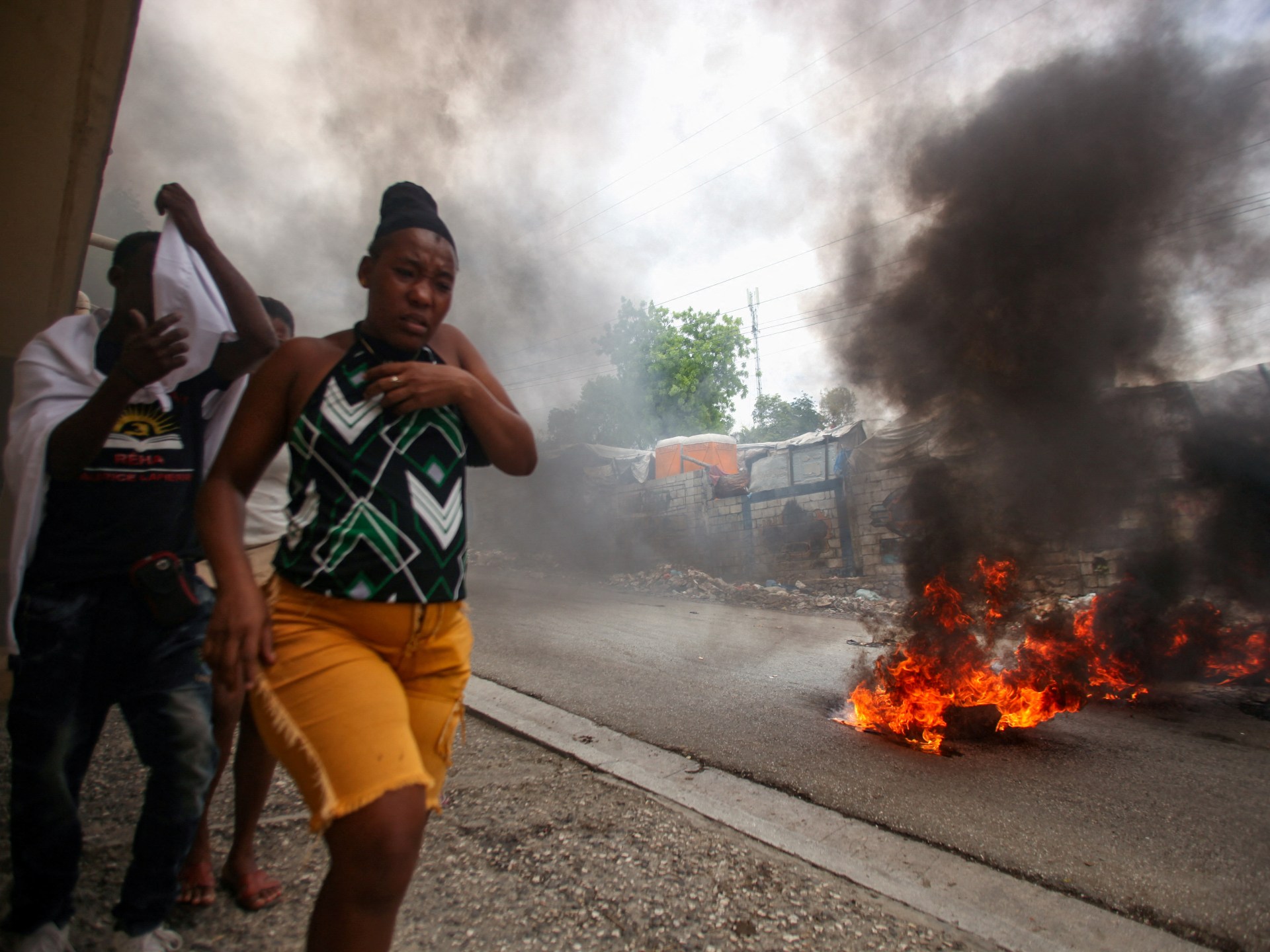
The security situation in Haiti is in “free fall”, Human Rights Watch (HRW) has warned, as armed groups continue to unleash deadly violence in the capital and other areas across the Caribbean nation.
In a statement on Thursday, HRW said criminal gangs have escalated their attacks in Port-au-Prince since late last year, and only 10 percent of the city remains under government control.
“Haiti’s security situation is in a free fall and Haitians are suffering horrific abuses,” said Nathalye Cotrino, the rights group’s senior Americas researcher.
The country has reeled from years of violence as powerful armed groups, often with ties to the country’s political and business leaders, have vied for influence and control of territory.
But the situation worsened dramatically after the July 2021 assassination of Haitian President Jovenel Moise, which created a power vacuum.

In 2024, the gangs launched attacks on prisons and other state institutions across Port-au-Prince, fuelling a renewed political crisis.
The campaign of violence led to the resignation of Haiti’s unelected prime minister, the creation of a transitional presidential council, and the deployment of a United Nations-backed, multinational police mission.
That Kenya-led police force – formally known as the Multinational Security Support Mission (MSS) – has failed to take control back from the gangs, however. Observers say the mission has been underfunded and ill-equipped.
Recently, so-called “self-defence” groups have formed in response to the armed gangs, leading to more deadly violence.
Protests have also broken out in Port-au-Prince against the country’s transitional presidential council, which has been unable to restore security. On April 7, the authorities declared a new, one-month state of emergency amid the violence.
“Declaring emergencies without equipping police with necessary resources, like effective armored vehicles, will not solve the insecurity crisis,” the National Human Rights Defense Network, a leading Haitian rights group, said in a recent report.
“The absence of state response has turned the police into firefighters—constantly reacting without strategic direction—while towns fall one after another,” the group said.

‘Why is no one helping us?’
According to UN figures, at least 1,518 people were killed and another 572 were injured between January 1 and March 27 in gang attacks, security force operations, and acts of violence committed by the “self-defence” groups and others.
Speaking to HRW, an aid worker in Haiti said people “no longer have a safe place” to go.
“Women … seeking help have not only lost loved ones, but have also been raped, displaced and left on the streets, starving and struggling to survive. We don’t know how much longer they can endure such suffering,” the aid worker said.
“All [victims] ask is for the violence to stop. With no support from the police or government, they feel abandoned. They ask, ‘Why is no one helping us? Why do Haitian lives not matter if we are human too?’”
The UN also says more than 1 million Haitians have been displaced by the violence, while half of the country – some 5.5 million people – face acute food insecurity.
In early April, Save the Children reported that more than 40,000 children were among those displaced in the first three months of 2025.
“Children in Haiti are trapped in a nightmare,” the group’s Haiti country director, Chantal Sylvie Imbeault, said in a statement.
“They are living in deadly areas controlled by armed groups, being robbed of a normal childhood, and at constant risk of recruitment—while humanitarian aid struggles to reach them,” she said.
“As displacement continues to soar, shelters are becoming completely overcrowded, leaving children vulnerable to disease, exploitation, and sexual violence.”
Conflict Zones
A nation behind bars: Why has Israel imprisoned 10,000 Palestinians? | Israel-Palestine conflict News
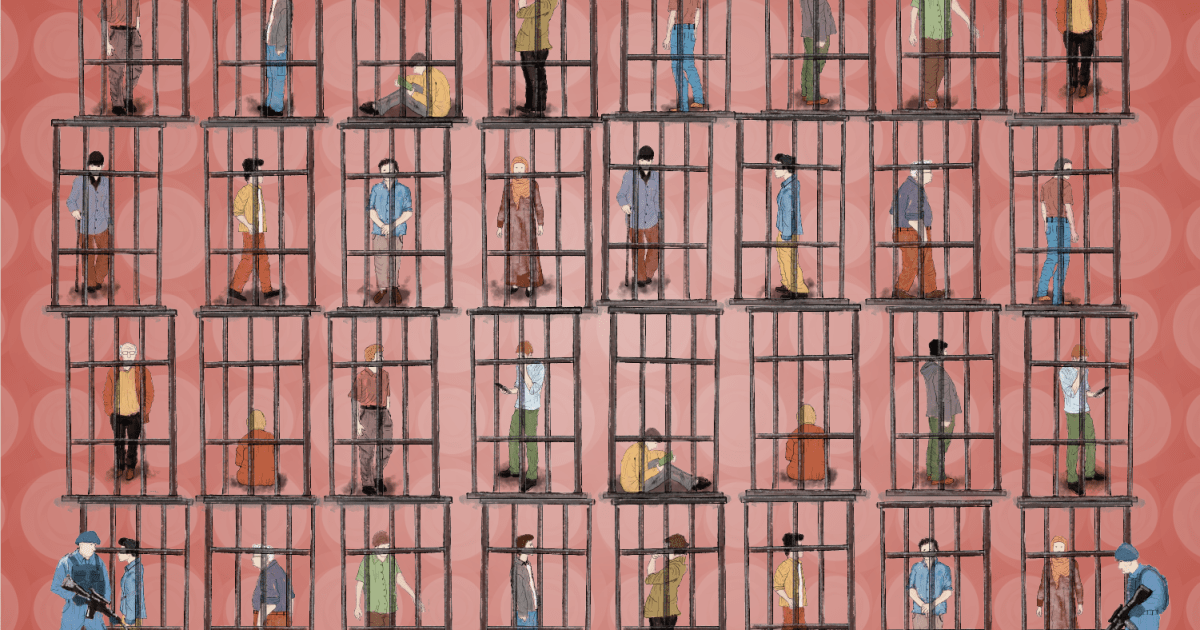
On April 17 every year, Palestinian Prisoner’s Day is commemorated to highlight the plight of those held in Israeli jails and their struggle for freedom against Israel’s continued occupation of their land.
The day marks the 1974 release of Mahmoud Bakr Hijazi, the first Palestinian freed in a prisoner swap with Israel. It was later designated to honour all Palestinian prisoners and highlight Israel’s ongoing detention of Palestinians and violation of their rights.
There are currently nearly 10,000 Palestinians held in Israeli jails in Israel and the occupied territory, according to prisoners’ rights group Addameer. To Palestinians, they are political prisoners who must be freed.

Of those in detention:
3,498 are held without charge or trial
400 are children
27 are women
299 are serving life sentences
Administrative detainees, including women and children, can be held by the military for renewable six-month periods based on “secret evidence” that neither the detainee nor their lawyer is allowed to see.
400 child prisoners – Ahmad Manasra’s case
Israel is the only country in the world that tries children in military courts, often denying them their basic rights.
According to Defense for Children Palestine, about 500 to 700 Palestinian children are detained and prosecuted in the Israeli military court system each year – some as young as 12.
The most common charge is throwing stones, a crime punishable under military law by up to 20 years in prison.
Currently, 400 Palestinian children remain in Israeli prisons, most are in pre-trial detention and have not been convicted of any offence.
One of the most harrowing child prisoner cases is that of Ahmad Manasra, who was arrested at the age of 13, brutally interrogated and then sentenced.

Ahmad was with his cousin Hassan, who allegedly stabbed two Israeli settlers near an illegal Israeli settlement in occupied East Jerusalem in 2015.
Hassan, who was 15 at the time, was shot and killed by an Israeli civilian, while Ahmad was severely beaten by an Israeli mob and run over by a car.
He suffered fractures to his skull and internal bleeding.
At the time, Israeli law stated that children under 14 could not be held criminally responsible.
To circumvent this, Israeli authorities waited until Manasra turned 14 to sentence him. The law was changed in August 2016 to allow the prosecution of younger children.
Ahmad was charged with attempted murder and sentenced to 12 years in prison. The sentence was later reduced to 9.5 years.
Ahmad has long suffered from mental health issues. At the end of 2021, a psychiatrist from Doctors Without Borders (MSF) was allowed to visit him and diagnosed him with schizophrenia. This was the first time an external doctor was allowed to see him.
On April 10, 2025, after spending more than nine years behind bars, Ahmad was finally released.
Palestinian prisoners doubled since October 7
From October 2023, when Hamas led an attack on southern Israel and Israel then began its war on Gaza, to April 2025, the number of Palestinian political prisoners doubled, rising from 5,250 to nearly 10,000.

One Palestinian freed, fifteen detained
Since October 7, Israel has detained about 30,000 Palestinians. During the prisoner-captive exchanges with Hamas, Israel has released just more than 2,000 Palestinian prisoners.
That means, for every person released, 15 others were apprehended.
During the most recent ceasefire exchange earlier this year, 739 Palestinians from Gaza were freed, that’s out of 15,000 that had been detained. While in the occupied West Bank, 652 were released, but nearly 14,500 have been detained.

Ceasefire prisoner-captive exchange
During the nearly two-month ceasefire earlier this year, Israel released 1,793 Palestinian political prisoners, while Hamas freed 38 Israeli captives, including eight bodies.
The majority of those released were from Gaza, with 739 freed – 337 from North Gaza, 227 from Gaza City, and 151 from Khan Younis, some of the war’s hardest-hit areas. In the occupied West Bank, at least 652 prisoners were released, with most coming from Ramallah (118), Hebron (111), and Nablus (79).

One million Palestinians detained since 1967
Israel’s detention policies have deeply affected Palestinian life for decades. According to the Palestinian Commission of Detainees and Ex-Detainees Affairs, since 1967, Israeli forces have detained an estimated one million Palestinians, or approximately 20 percent of the Palestinian population. Statistically, this means one out of every five Palestinians has been imprisoned at some point in their life.
For many families, arrest has become an inevitability. This systemic practice has fragmented communities, perpetuated cycles of trauma, and generated widespread resentment.
As Israel’s arrest campaign continues, many Palestinians fear that mass imprisonment is not just a byproduct of occupation but a deliberate tool of control. For the thousands currently behind bars, freedom remains uncertain, just as it has for generations before them.

Conflict Zones
Fifty years after fall of Phnom Penh, history weighs on Cambodian politics | Conflict News
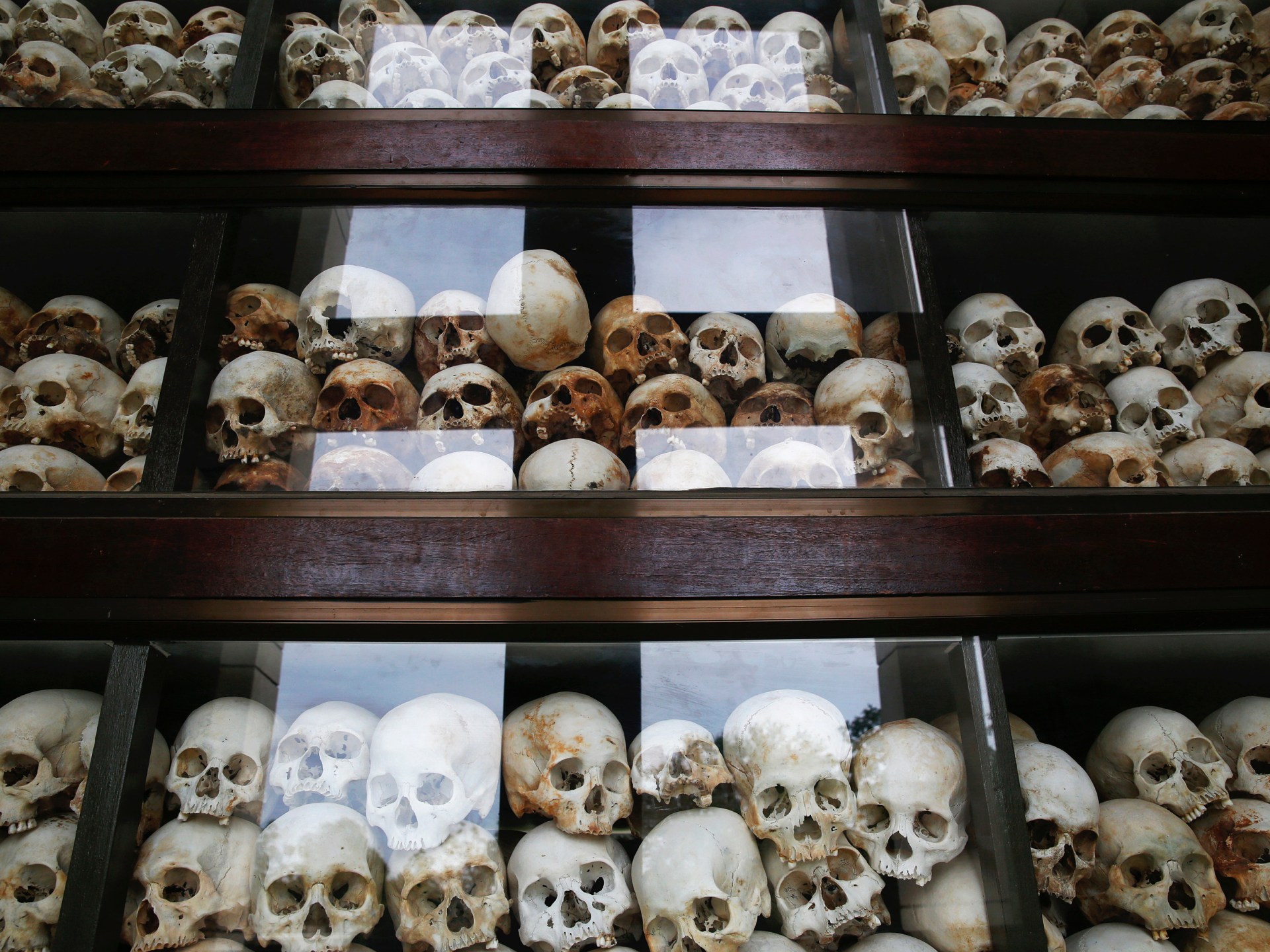
Fifty years after the fall of Phnom Penh to the Khmer Rouge rebel army, the events of April 17, 1975 continue to cast a long shadow over Cambodia and its political system.
Emerging from the bloodshed and chaos of the spreading war in neighbouring Vietnam, Pol Pot’s radical peasant movement rose up and defeated the United States-backed regime of General Lon Nol.
The war culminated five decades ago on Thursday, with Pol Pot’s forces sweeping into Cambodia’s capital and ordering the city’s more than two million people into the countryside with little more than the belongings they could carry.
With Cambodia’s urban centres abandoned, the Khmer Rouge embarked on rebuilding the country from “Year Zero”, transforming it into an agrarian, classless society.
In less than four years under Pol Pot’s rule, between 1.5 and three million people were dead. They would also almost wipe out Cambodia’s rich cultural history and religion.
Many Cambodians were brutally killed in the Khmer Rouge’s “killing fields”, but far more died of starvation, disease and exhaustion labouring on collective farms to build the Communist regime’s rural utopia.
In late December 1978, Vietnam invaded alongside Cambodian defectors, toppling the Khmer Rouge from power on January 7, 1979. It is from this point onwards that popular knowledge of Cambodia’s contemporary tragic history typically ends, picking up in the mid-2000s with the start of the United Nations-backed war crimes tribunal in Phnom Penh, where former regime leaders were put on trial.
For many Cambodians, however, rather than being relegated to history books, the 1975 fall of Phnom Penh and the toppling of the Khmer Rouge in 1979 remain alive and well, embedded in the Cambodian political system.
That tumultuous Khmer Rouge period is still used to justify the long-running rule of the Cambodian People’s Party (CPP) under varying forms since 1979, and the personal rule of CPP leader Hun Sen and his family since 1985, according to analysts. It was the now ageing senior leadership of the CPP who joined with Vietnamese forces to oust Pol Pot in 1979.
While memories of those times are fading, the CPP’s grip on power is as firm as ever in the decades since the late 1970s.
‘The making of a political system’
The ruling CPP see “themselves as the saviour and the guardian of the country”, said Aun Chhengpor, a policy researcher at the Future Forum think tank in Phnom Penh.
“It explains the making of a political system as it is today,” he said, noting that the CPP has long done what it required to “ensure that they are still there at the helm … at any cost”.
Most Cambodians have now accepted a system where peace and stability matter above all else.
“There seems to be an unwritten social contract between the ruling establishment and the population that, as long as the CPP provides relative peace and a stable economy, the population will leave governance and politics to the CPP,” Aun Chhengpor said.
“The bigger picture is how the CPP perceives itself and its historic role in modern Cambodia. It’s not that different from how the palace-military establishment in Thailand or the Communist Party in Vietnam see their roles in their respective countries,” he said.

The CPP headed a Vietnamese-backed regime for a decade, from 1979 to 1989, bringing relative order back to Cambodia after the Khmer Rouge, even as fighting persisted in many parts of the country as Pol Pot’s fighters tried to reassert control.
With support dwindling from the Soviet Union in the last days of the Cold War and an economically and militarily exhausted Vietnam withdrawing from Cambodia, Hun Sen, by then the leader of the country, agreed to hold elections as part of a settlement to end his country’s civil war. From 1991 to 1993, Cambodia was administered by the UN Transitional Authority in Cambodia (UNTAC).
The Cambodian monarchy was formally re-established, and elections were held for the first time in decades in 1993. The last Khmer Rouge soldiers surrendered in 1999, symbolically closing a chapter on one of the 20th century’s bloodiest conflicts.
Despite a bumpy road forward, there were initial hopes for Cambodian democracy.
The royalist National United Front for an Independent, Neutral, Peaceful and Cooperative Cambodia Party – better known by its acronym FUNCINPEC – won the UN-administered elections in 1993. Faced with defeat, the CPP refused to cede power.
The late King Norodom Sihanouk stepped in to broker an agreement between both sides that preserved the hard-won peace and made the election a relative success. The international community breathed a sigh of relief as the UNTAC mission in Cambodia had been the largest and costliest at that time for the world body, and UN member states were desperate to declare their investment in nation rebuilding a success.
Ruling jointly under a power-sharing agreement with CPP and FUNCINPEC co-prime ministers, the unsteady alliance of former enemies held for four years until ending in a swift and bloody coup by Hun Sen in 1997.
Mu Sochua, an exiled opposition leader who now heads the nonprofit Khmer Movement for Democracy, told Al Jazeera that the CPP’s resistance to a democratic transfer of power in 1993 continues to reverberate throughout Cambodia today.
“The failure of the transfer of power in 1993 and the deal the King made at the time … was a bad deal. And the UN went along because the UN wanted to close shop,” she told Al Jazeera from the US, where she lives in exile after being forced to flee the CPP’s intensifying authoritarianism at home.
“The transitional period, the transfer of power … which was the will of the people, never happened,” Mu Sochua said.
End of warfare does not mean the beginning of peace
Following the coup in 1997, the CPP did not come close to losing power again until 2013, when they were challenged by the widely popular Cambodian National Rescue Party (CNRP).
By the time of the next general election in 2018, the CNRP was banned from politics by the country’s less-than-independent courts, and many of the opposition leaders were forced to flee the country or ended up in prison on politically motivated charges.
Unhindered by a viable political challenger, Hun Sen’s CPP went on to win all seats in the 2018 national election, and all but five of the 125 parliamentary seats contested during the last general election in 2023.

The CPP has also firmly aligned with China, and the country’s once vibrant free press has been shut down, and civil society organisations cowed into silence.
After notching up 38 years in power, Hun Sen stepped aside as prime minister in 2023 to make way for his son Hun Manet – a sign that the CPP-led political machine has eyes on dynastic, multi-generational rule.
But new challenges have emerged in Cambodia’s post-war decades of relative prosperity, huge inequality and de facto one-party rule.
Cambodia’s booming microcredit industry was intended to help lift Cambodians out of poverty, but the industry has instead burdened families with high levels of personal debt. One estimate put the figure at more than $16bn in a country with a population of just 17.4 million and a gross domestic product (GDP) of $42bn in 2023, according to World Bank estimates.
Aun Chhengpor told Al Jazeera there are signs the government is taking note of these emerging issues and demographic changes.
Hun Manet’s cabinet is shifting towards “performance-based legitimacy” because they lack the “political capital” once bestowed by the public on those who liberated the country from the Khmer Rouge.
“The proportion of the population that remembers the Khmer Rouge, or that has usable memories of that period, is shrinking year by year,” said Sebastian Strangio, author of Hun Sen’s Cambodia.
“I don’t think [the CPP ‘s legacy] is sufficient for the majority of the population born since the end of the Cold War,” Strangio told Al Jazeera.
Now, there even appears to be room for a limited amount of popular opposition, analyst Aun Chhengpor said.
In January, Cambodian farmers blockaded a main highway to protest against the low prices of their goods, suggesting there may be “some space” in the political system for localized dissent on community-based issues, he said.
“[It] will be an uphill struggle for the fractured political opposition to thrive – not to mention to organise among themselves and, let alone, have the hope of winning a general election,” Aun Chhengpor said.
“However, there are indications that the CPP still somehow believes in the multiparty system and limited democracy in the way that they can have a say on when and how much democracy,” he added.
Speaking in exile from the US, Mu Sochua had a dimmer view of Cambodia’s situation.
The same month as the farmer protests in Cambodia, a former Cambodian opposition member of parliament was shot dead in broad daylight on a street in Thailand’s capital, Bangkok.
The brazen assassination of Lim Kimya, 74, a dual Cambodian-French citizen, recalled memories of the chaotic political violence of the 1990s and early 2000s in Cambodia.
Peace and stability, Mu Sochua said, exist only on the surface in Cambodia, where still waters run deep.
“If politics and the space for people to engage in politics is non-existent, what dominates then is not peace,” she said.
“It’s still the feeling of war, of insecurity, of the lack of freedom,” she told Al Jazeera.
“After the war, 50 years later, at least there is no bloodshed, but that alone does not mean there is peace.”
-

 Education1 day ago
Education1 day agoTrump administration revokes humanitarian parole of Spanish teacher
-

 Conflict Zones8 hours ago
Conflict Zones8 hours agoHaiti in ‘free fall’ as violence escalates, rights group warns | Armed Groups News
-

 Sports2 days ago
Sports2 days agoStephen Curry and Jimmy Butler lift the Warriors past the Grizzlies and into the NBA Playoffs
-
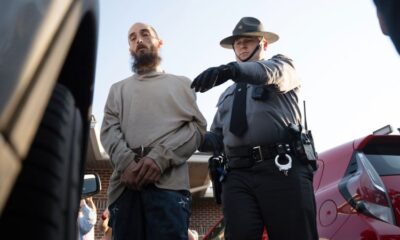
 Europe1 day ago
Europe1 day agoCody Balmer, the suspect in arson at Pennsylvania governor’s home targeted the governor for his views on war in Gaza, warrant says
-

 Sports1 day ago
Sports1 day agoNew Orleans Saints win lawsuit over fleur-de-lis trademark filed by ‘direct descendant of the Kings of France’
-
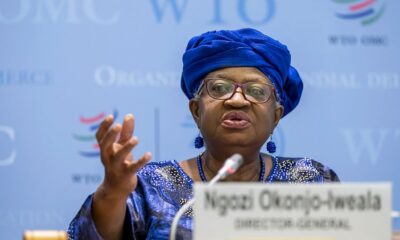
 Africa1 day ago
Africa1 day agoWorld Trade Organization says global trade could slide this year due to tariffs
-

 Europe1 day ago
Europe1 day agoLive updates: Trump news, immigration and tariff updates
-

 Education1 day ago
Education1 day agoReggaeton is sending China wild — and it’s teaching college students Spanish




